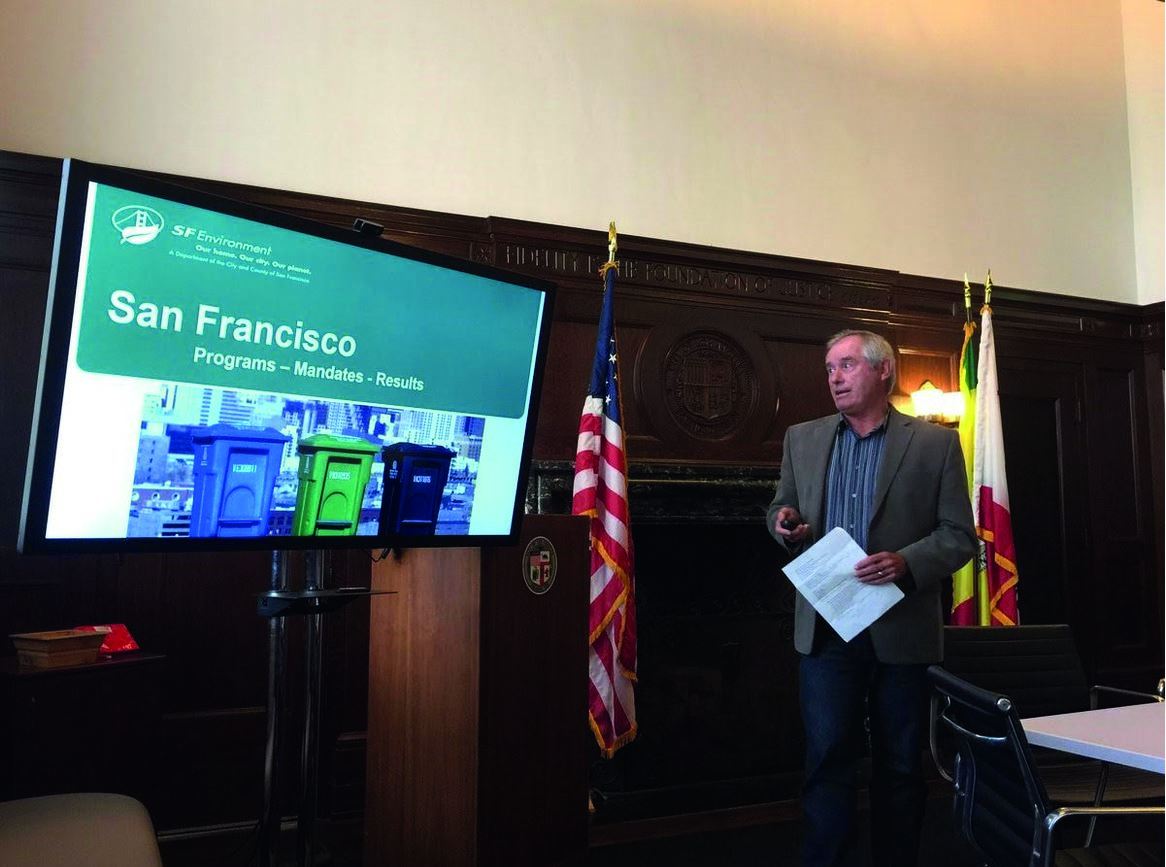
MEET WITH
Alex Dmitriew
Commercial Zero Waste Coordinator at the San Francisco Department of Environment.

Guided tour like no other to have a look at the garbage management.
Famous for its cinematographic, musical, literary, social struggles and beat generation myths, San Francisco is now a green city that is recognized for its ‘Zero Waste’ waste management policy. The aim of this policy is to achieve the elimination and recycling of all its waste by 2020. To this day, the agglomeration has already reached the extraordinary rate of 80 % of recycled waste, including domestic waste and those generated by public works and companies.
San Francisco, pioneer of Zero Waste
"Zero Waste" came to life in 2003, when the city found out that 90 % of the contents of an American citizen’s waste is recyclable. An ambitious bet for a city of 880,000 inhabitants that produces hundreds of tons of waste every day. The programme includes drastic and unprecedented measures to change mindsets and mobilize citizens.
The building sector
In February 2006, the city voted to require at least 65 % of construction debris (concrete, metal, wood …) be brought to the recycling centers. Violation of this rule can lead to a fine and the suspension of the business for six months. In addition, the city is committed to using only recycled materials for public works such as asphalt, sidewalks, gutters or the foundations of buildings.
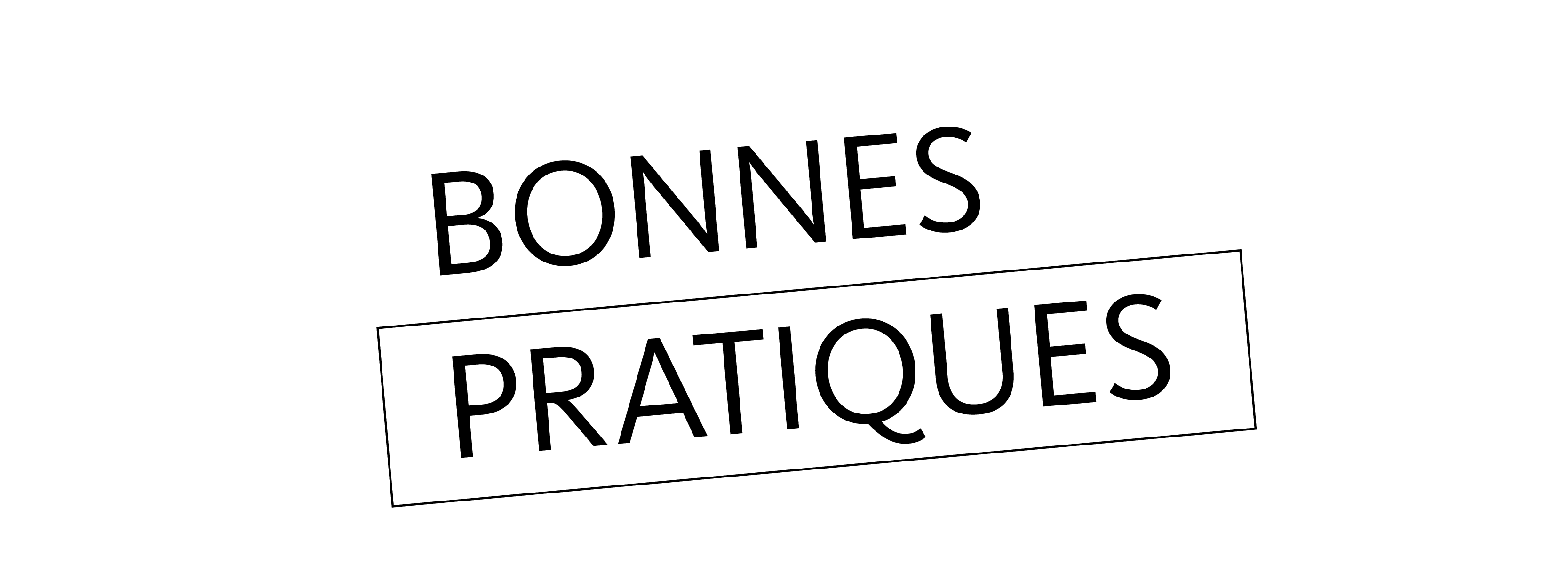
OUTRIGHT FORBIDDEN
Recycling as savings
Pressure is very strong on restaurants, hotels, grocery stores, numerous in San Francisco and which generate a large amount of organic waste. The system is simple: a green bin for organic waste, a blue one for recyclable waste (paper, cardboard, plastic) and a black one for non-recyclable waste. Taxes are applied proportionally to the size of the bins, knowing that the black is overtaxed. Thus, the more you recycle, the more money you save. The concept is a success. In one year, the Hilton, the first hotel that applied the concept, and which serves 7,500 meals a day, saved $ 200,000. Since 2009, the initiative extended to individuals. Result: everyone starts reducing what they throw away to lower their trash bill.
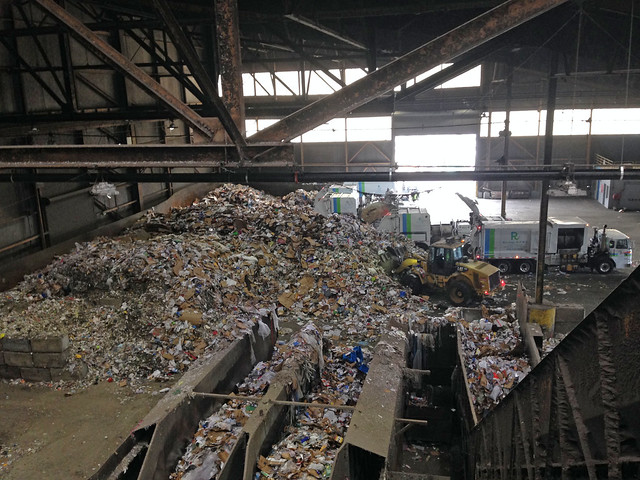
The garbage police
Garbage collectors are held responsible for checking that the waste is placed in the bins provided for this purpose. If not, they are entitled to issue fines between $ 100 and $ 1000 ... even if, in fact, they only have warnings.
The waste's journey
The green garbage bins of organic waste are loaded onto trucks and dumped near Vacaville, 40 kilometers north of San Francisco, which produces 650 tonnes of a very nourishing compost that is sold to farmers in the area. The remaining solids and reusable, are sorted at Pier 96, a 20,000-square-meter maritime hangar that is partly powered by solar panels on its roof, as well as home to the largest recycling center on the planet.
In a stunning tam-tam sound, clouds of multicolored papers are floating on the sorting chains towards compactors. 650 tons are poured and sorted into sixteen materials per day (different types of plastics, metal, glass, paper ...). High-tech carpets with laser eyes sort the plastics, which are then propelled to skips by air jets. Magnetic belts retract the metals. Each material is then packed and stored prior to export to manufacturing facilities in California, Canada and Asia. Metal is redirected to foundries. This system gives credibility to the hope of systematic and massive recycling of waste, key to a significant reduction of greenhouse gas emissions.
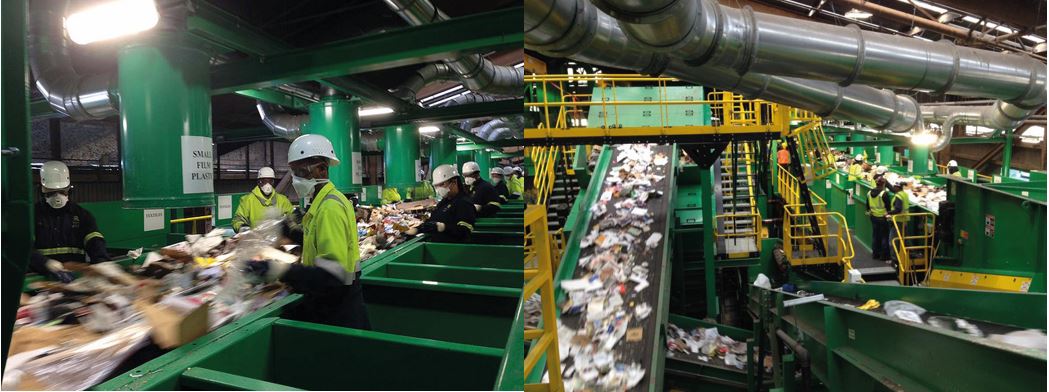
Pier 96. Everyday, 650 tons of waste are sorted in the recycling center of San Francisco
In San Francisco, waste is worth gold
The economy and the environment are generally separated, "Zero waste" shows that the two can be combined. The Pier 96 recycling site has created 178 jobs that are paid from $ 40,000 to $ 80,000 a year, and only for the neighborhoods’ residents. For every ton of waste, recycling creates 20 times more jobs than incineration. The program costs a total of $ 300 million a year, and is mostly funded by garbage collection taxes.
Today, San Francisco can show solid results by avoiding sending 80% of its waste to landfills. The rate is only 21% in New York and 10% in Chicago. The way is long, its goal of 100% recycled or composted waste is still a challenge. It is particularly complicated due to the large number of online orders made by the inhabitants, orders whose packaging swells the bins. It is up to companies to be proactive by integrating ecodesign in the manufacturing process, reviewing their production methods, reducing their packaging. Limiting one’s waste’s production remains the best solution, as recycling needs a lot of energy. Thus, it is clear that the Zero Waste goal can only be achieved with the involvement of the entire ecosystem of actors.

MEET WITH
Commercial Zero Waste Coordinator at the San Francisco Department of Environment.

MEET WITH
Commercial Zero Waste Coordinator at the San Francisco Department of Environment.
Sustainability MAG: San Francisco has set up a unit fully devoted to the Zero Waste initiative. What is your role in this programme?
Alex Dmitriew: I’m part of the Zero Waste team and specialize in commercial accounts. In addition to the commercial team we also have a residential and city government team for a total of about 10 full time employees. I’m responsible for implementing our various zero waste ordinances and policies in the commercial sector including the Mandatory Ordinance and bans on plastic bags and Styrofoam.
The new trash billing system supposed a shift in mindset. How did companies and residents react to it?
Residents and companies pay for collection services on a "pay as you throw" system. That is, the more they recycle and compost, the more they can save on their refuse bill. Conversely, the more trash they produce, the larger the bill. Residents receive a bill from Recology, our service provider, and pay them directly. The same applies to businesses and multi-family buildings. Our residents and businesses are paying for services that have value. It is not a tax and neither the residential nor business sectors see this as a burden or unfair.
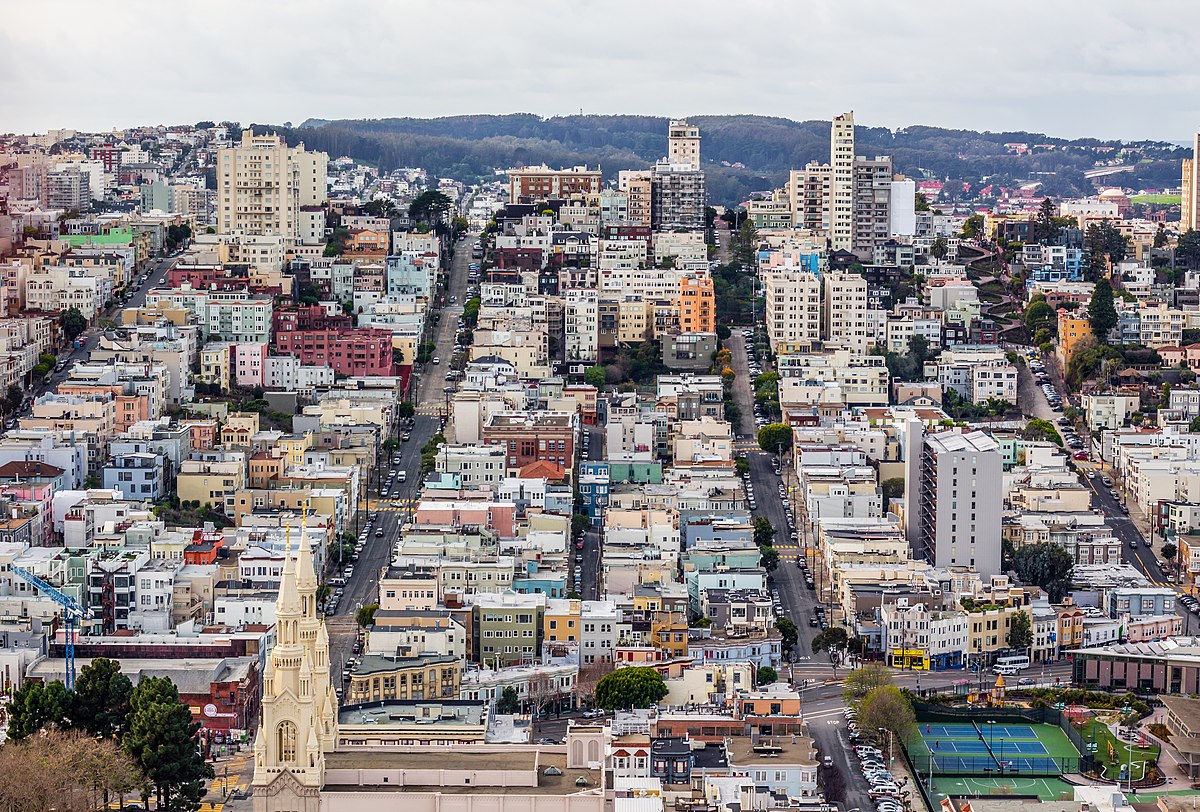
Is it a cost-effective program?
Recology collects about 300 million dollars a year from residents, businesses and multi-family buildings. This revenue pays for all our programs including this department’s budget - about 11 million dollars per year-. No City funds or taxpayer dollars are used to fund any of our zero waste policies – they are completely rate payer funded.
How far have you progressed in meeting the Zero Waste goal? How far have you still to go?
Our original goal was zero waste by 2020. This was established in 2003 and was an aspirational goal. Today, we have achieved 80 % recovery. It took us 13 years to go from the initial 33 % to 80 %. Going forward, the City is pledging to reduce waste generation by 15 % and reduce landfill disposal by 50 % by 2030.
Do you think this model can be transposed to other cities?
Yes. As long as other cities have the political will to adopt significant policies to improve the quality of life and take significant steps to combat climate change.
In short, what would you advise to a mayor who wants to implement this measure?
Remove organics from the waste stream and divert the material for beneficial use, that is compost. Make source separation mandatory for all sectors with the ability to enforce it.